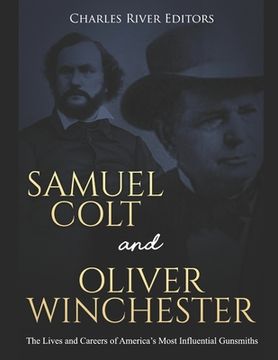Samuel Colt and Oliver Winchester: The Lives and Careers of America's Most Influential Gunsmiths (in English)
Synopsis "Samuel Colt and Oliver Winchester: The Lives and Careers of America's Most Influential Gunsmiths (in English)"
*Includes pictures*Includes a bibliography for further readingGunsmiths in early 19th century America were helped along by noted artisans from Germany, Switzerland, and other European powers, but despite advances made in the European and American musket, the requirement of an exterior spark and percussion to ignite powder for a single-shot discharge remained the paradigm. Similarly, the era was unable to move past the cumbersome weapon that required at least half a minute to reload. The military compensation for such an ungainly and vulnerable process was the alternation of troop lines, in which one fired while the other reloaded from behind. Effective as that was in laying down constant fire and simultaneous reloading, the force as a whole was disabled by a large fraction, and the reloading soldiers were vulnerable to saber attacks on horseback as well.From the bayonet of 1620 to the emergence of repeating firearms in the American Civil War, sometimes referred to as the "first truly modern war," military procedures remained largely the same, based on entrenched European customs. Napoleonic tactics were taught as mainstream at the military academies, and the musket remained in a stagnant state of evolution, but even the most tradition-bound army command was forced to give way at some point to a generation of scientist-inventors, civilian manufacturing centers, and entrepreneurs born during the Industrial Revolution. The old guard dug in its heels, and even well past the Civil War, new technologies were met with stiff resistance. High-ranking officers, drawn from the ranks of martial families steeped in the War of 1812, fended off the new scientific engineering and what they considered the waste of random firing. However, the realities of American expansionism, population redistribution, a labor movement unwilling to cede its members well-being, and the rise of the factory became impossible to ignore. The driving forces behind modern light weaponry were new disciples of mass production, interchangeable parts, and a more developed and aggressive marketing style. Evolution of the modern rifle did not provide all of its own impetus. As the ever-improving cartridge progressed from primitive paper to brass encasement, the weapons required to fire with the charge were forced to change as well.By the time weapons industrialist Samuel Colt was born, the Lewis and Clark Expedition sent to the Pacific by Thomas Jefferson had only recently returned with their report on the first overland continental journey. Outside of a small group of mountain men trapping and trading fur for European fashion magnates, few white settlers had found their way across the Great Plains. The firearms of the Revolution demonstrated little difference between a soldier's flintlock musket and a hunting weapon taken from the mantle. As the civilian entrepreneur and the soldier became increasingly interdependent, the new corporate executives of arms companies became tycoons. Mass production and increasingly sophisticated marketing techniques helped to create the national and international arms merchant, a model upon which global governments expanded. With few exceptions, the nature of the modern firearm as an everyday utility enabled these giants to arm any ideology, or both sides of any conflict. In the manner that Samuel Colt broke open the single-shot tradition in hand weapons, Oliver Fisher Winchester and his celebrated rifle shared the title of "the gun that won the West." In the arena of portable arms, these two men dominated much of the technological and promotive aspects of 19th century weaponry, alternating between resisting and collaborating with rivals. While Colt created the first effective revolver mechanism for the handgun based on the technology of the ship's wheel, it was Oliver Winchester who instituted 140 years of branding dominance by virtue of the first reliable repeating rifle.

